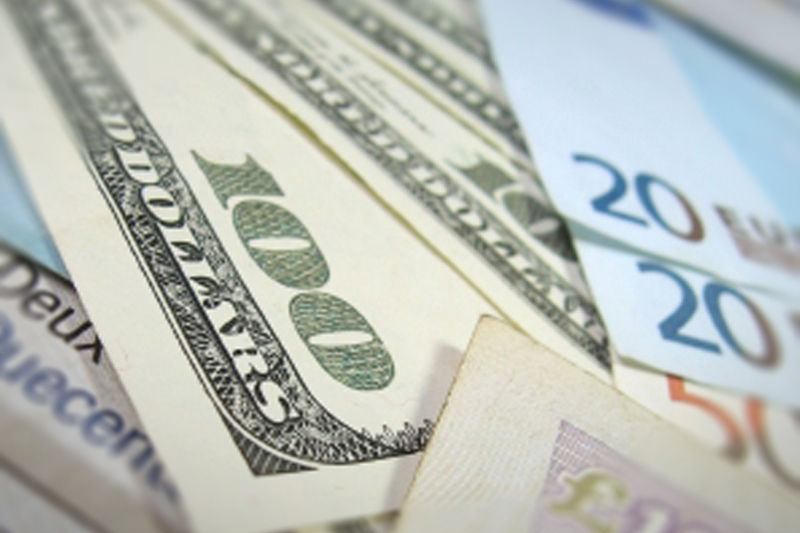Investing.com -- EUR/USD fell sharply on Wednesday, plunging to its lowest level in three weeks, as the Federal Reserve sent strong indications that it will raise short-term interest rates when it meets next in June if the domestic economic outlook improves as expected.
The currency pair traded in a broad range between 1.1214 and 1.1316, before settling at 1.1218, down 0.0099 or 0.85% on the session. With the considerable losses, the euro closed below 1.13 against the dollar for the first time since April 29. At the same time, the euro suffered its worst one-day loss versus the greenback in more than a month. For the month of May, the dollar has closed higher against its European counterpart in all but two sessions.
EUR/USD likely gained support at 1.0538, the low from December 3 and was met with resistance at 1.1713, the high from Aug. 24.
On Wednesday afternoon, the Federal Open Market Committee (FOMC) said in the minutes from its April meeting that it is leaving the possibility open for a June rate hike as the economy continues to strengthen and headwinds from global financial markets continue to recede. Since raising the Federal Funds Rate in December for the first time in seven years, the FOMC has left its benchmark interest rate steady in each of its three meetings this year. The FOMC cited a stable dollar, rising equity prices and a strong labor market as factors for tightening monetary policy, while noting that weak inflation and the potential of a U.K. departure from the European Union could lead to a delay in the first rate hike of 2016.
"In its postmeeting statement, rather than stating that global economic and financial developments continued to pose risks, the Committee decided to indicate that it would continue to closely monitor inflation indicators and global economic and financial developments," the FOMC said in the April minutes. "This change in language was intended to convey the Committee's sense that the risks associated with global developments had diminished somewhat since the March FOMC meeting without characterizing the overall balance of risks.
Any rate hikes by the Fed this year are viewed as bullish for the dollar, as investors pile into the greenback in order to capitalize on higher yields.
"Most participants judged that if incoming data were consistent with economic growth picking up in the second quarter, labor market conditions continuing to strengthen, and inflation making progress toward the Committee's 2 percent objective, then it likely would be appropriate for the Committee to increase the target range for the federal funds rate in June," the FOMC added.
Investors will parse closely-watched speeches from Fed governor Stanley Fischer and New York Fed president William Dudley on Thursday for further indications on the tightening path the FOMC could pursue over the final half of the year. At a joint appearance in Washington on Tuesday, both Atlanta Fed president Dennis Lockhart and San Francisco Fed president John Williams suggested that "two to three rate hikes," this year seems possible.
Yields on the U.S. 10-Year shot up eight basis points to 1.85%. Earlier on Wednesday, the spread between the 10-year and 2-Year U.S. Treasuries fell to an intraday low of 85 basis points, as the yield curve hit its flattest level in nine years.
The U.S. Dollar Index, which measures the strength of the greenback versus a basket of six other major currencies, rose by as much as 0.70% to an intraday high of 95.23, before settling at 95.20. At session-highs, the index hit its highest level since late-March.
